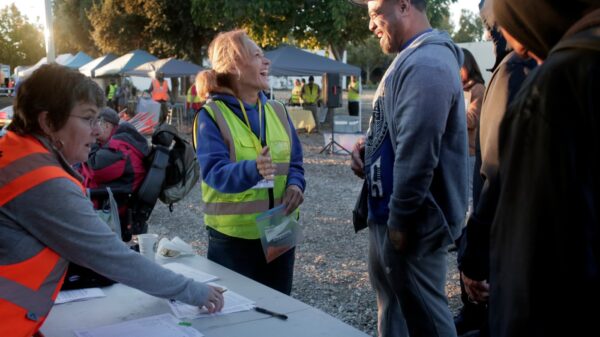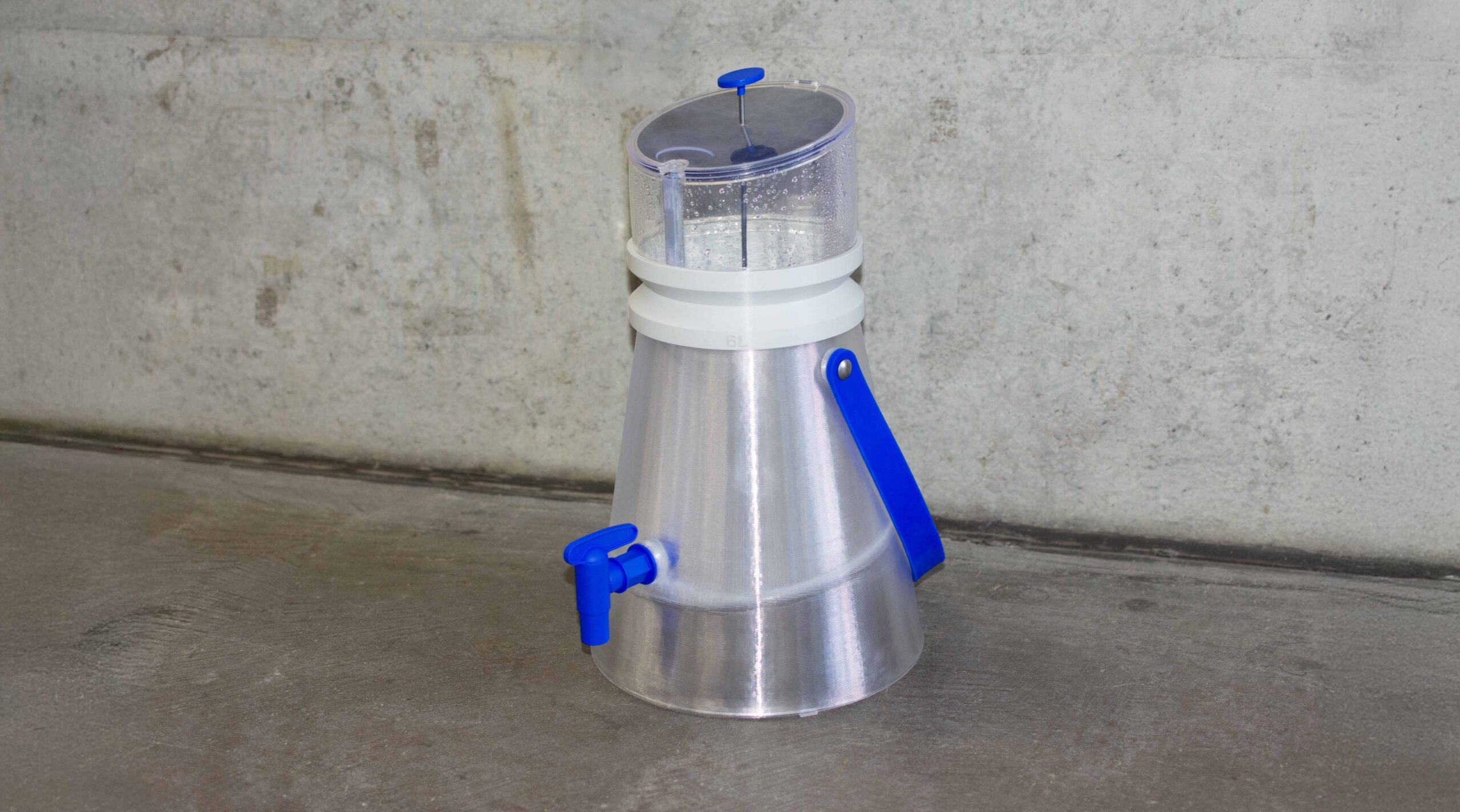A groundbreaking development in water scarcity solutions has emerged from the minds of two graduates from FH Münster University of Applied Sciences. Louisa Graupe and Julika Schwarz have designed a 3D-printed device named Water from Air, capable of producing up to 1.6 gallons of clean drinking water daily by harnessing moisture from the atmosphere.
Constructed primarily from 3D-printed materials, this innovative prototype captures water molecules from the air, condensing them into a drinkable form. The device integrates advanced “metal-organic frameworks,” which effectively remove pollutants, potentially negating the need for additional filtration. A convenient spigot at the bottom allows users to pour water directly into a cup or storage container.
An Ambitious Response to Water Scarcity
Despite still being in the development phase, Graupe and Schwarz envision the device as a practical solution for households facing water scarcity. On the design platform Behance, they describe it as “a mobile water producer and storage unit that can be used flexibly in private households, regardless of geographical and social circumstances.”
The device comprises several stackable sections, with the top resembling a French press. It draws in air to extract water molecules, and after about an hour, the hatch closes to initiate a heating process that triggers condensation. Each full cycle takes approximately two hours, yielding around 17 fluid ounces, roughly equivalent to a medium-sized plastic water bottle. If operated continuously, the device can produce sufficient water for an average family of four, assuming each individual consumes 1.5 liters daily.
While the potential of this device is significant, it is important to note that it is not yet ready for widespread adoption. In response to queries on Behance, Schwarz stated that the materials are still under research and that the patenting process is ongoing, with no pricing details disclosed.
Addressing Global Water Challenges
The motivation behind the project stems from the glaring issue of water insecurity that affects millions worldwide. According to the Centers for Disease Control and Prevention, approximately 2.2 million people in the United States live without basic plumbing or running water. A study from Arizona State University estimates that 12 percent of U.S. residents may face water insecurity, disproportionately impacting Latino, Black, and Indigenous communities.
On a global scale, the World Economic Forum reports that around 72 percent of the global population experiences some form of water insecurity, with approximately 8 percent facing critical shortages. Current solutions often rely on large, complex systems that may not cater to individual household needs.
Graupe and Schwarz suggest that Water from Air could provide a localized solution, allowing households to produce their own water based on their specific needs. The 3D-printing aspect of the device further enhances its accessibility, as communities could potentially print their own units, thus avoiding reliance on centralized distribution networks.
“Our goal was to illustrate the potential of this novel material through a user-friendly and self-sufficient product design—something that previously only existed in complex laboratory setups,” Schwarz explained.
Both engineers express optimism about the future of their device, noting its potential to not only serve individuals but also to supply entire communities, addressing the urgent need for reliable clean water sources in an increasingly water-scarce world.







































































